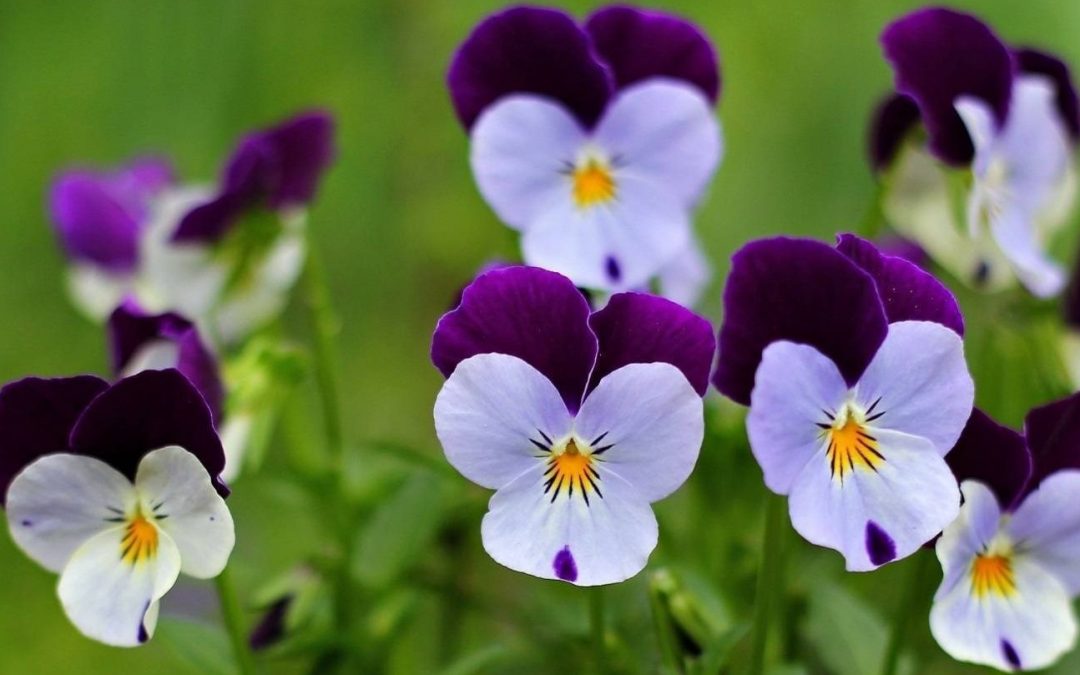Not all gardening lovers can boast of having enough space on their country plot so that, in addition to numerous vegetable beds and garden plantings, they can also place an extensive flower garden next to the house.
If you also don’t have space for a large flower bed, don’t be discouraged – many ornamental crops will fit literally “on a patch” of land and at the same time will look no less bright and picturesque than taller and larger plants.
Here are our top 10 of these small flowers that will decorate even the smallest flower bed.
Table of Contents
Bright Small Flowers for Your Charming Garden
Phlox

Among the numerous types of phlox, these beautifully flowering herbaceous plants of the Sinyukhidae family, you can easily find small flowers in this variety.
pay attention first of all to the various varieties of perennial phlox subulate with recumbent stems and dwarf varieties of annual phlox Drummond, which will not rise above 10-15 cm in height.
Phlox has bright five-petalled or double flowers with round, heart-shaped or pointed petals, the corolla color of which can be red, white, lavender, pink, cream, lilac, purple, and even bicolor.
Phlox of many varieties bloom even twice a season, and the abundance of blooming flowers turns a flowerbed into a colorful carpet.
Read more about the little Lilac: Dwarf Lilac: The Ultimate Care Guide for All Varieties.
Lobelia
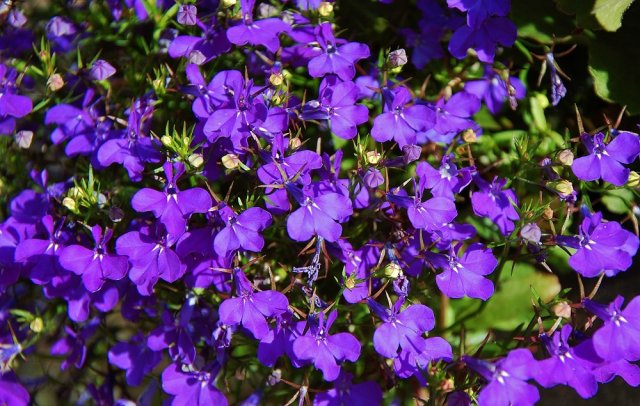
If you are a fan of lilac-blue colors, choose varieties of long-petioled lobelia for your compact flower garden – a bright herbaceous perennial with small flowers mainly in these shades (although there are also white, violet, and purple).
Lobelia has varieties of both bushy and creeping forms, representatives of which do not exceed 10-20 cm in height and easily take root independently with lateral shoots.
Lobelia blooms profusely and for a long time – from June to September-October. In the middle zone, it is usually grown as an annual.
Viola
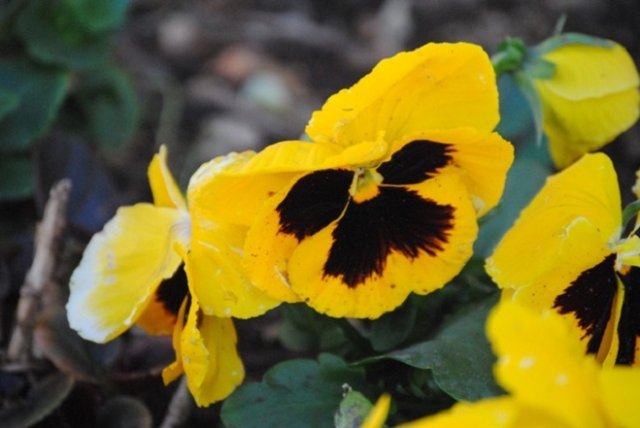
The unpretentious baby viola is known to most gardeners under the popular name “pansy”. Biologically, this plant is called violet.
In flower beds, you can most often find tricolor, yellow, and fragrant violets, as well as their numerous “crosses” and varieties, such as the popular large-flowered Wittrock violet.
You can choose a viola with simple or double small flowers of a wide variety of colors (purple, orange, blue, wine red, white, yellow, bi- and tricolor, with numerous strokes and spots on the petals), regular or remontant, blooming in spring or summer – the vast majority of flowers of different types and varieties do not exceed 10-20 cm in height.
Pushkinia
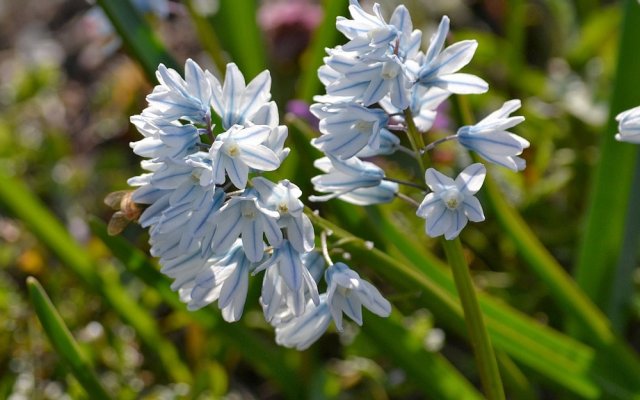
If you need to fill a flowerbed with small flowers from the very early spring, pay attention to primroses – for example, Pushkinia, a charming ephemeral, resistant to low temperatures, which colors the garden with white and blue colors from April.
In culture, one of two types of Pushkinia is usually grown – prolesciformes and hyacinth. The flowers of the first look like tiny blue and white bells, it is taller and blooms earlier.
The second is distinguished by buds with blue veins, shorter growth, and a later flowering period. All Pushkinias do not exceed 10-18 cm in height, provide abundant self-seeding, and are very unpretentious.
Aster
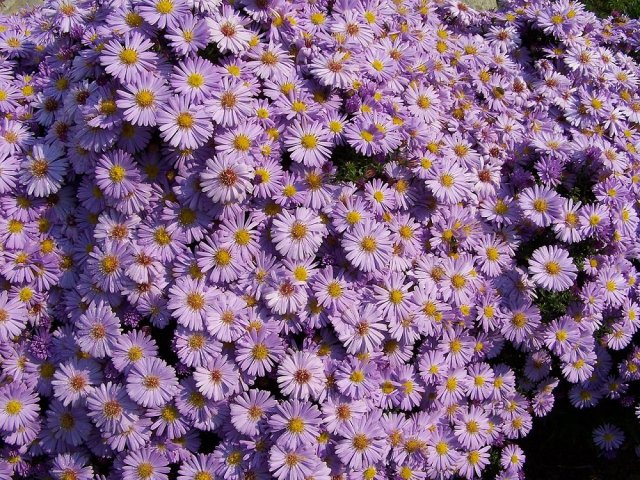
Among the huge variety of asters, the most popular beautifully flowering garden plants, you can easily choose these small flowers for a small flowerbed.
These are dwarf and low-growing forms, among which you can choose annual or perennial species, as well as varieties of flowers that differ in growth pattern or silhouette (spreading, pyramidal, columnar, round-oval, fountain-shaped, etc.), as well as shape, size and flower color.
Marigold
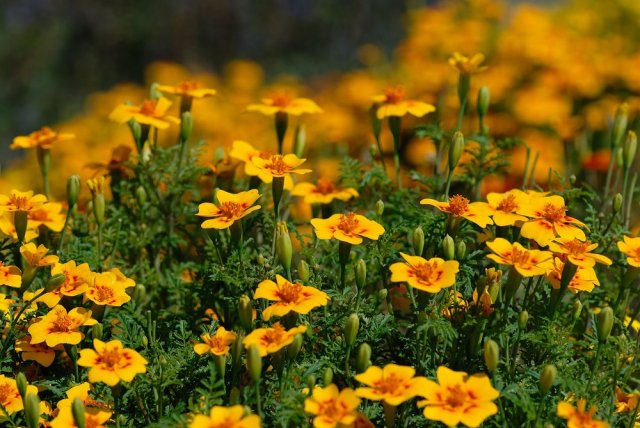
The bright yellow and orange “balls” of blooming marigolds delight with flowering from early summer until mid-autumn, until the first frost.
Moreover, planting these unpretentious small flowers has not only aesthetic but also practical significance. They are often sown around the perimeter of the garden and in the rows: thanks to their specific aroma, they effectively repel many pests.
And if some marigolds are quite tall, then for a miniature flowerbed you can choose other varieties – mainly from the group of thin-leaved (Mexican) varieties up to 20-25 cm in height.
Catnip
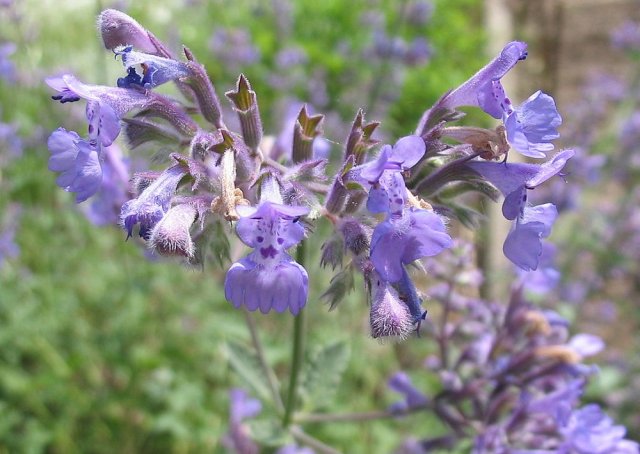
Catnip is a whole genus of perennial fast-growing plants of the Lamiaceae family, mainly with blue or bluish-violet (less often white or pinkish) inflorescences, represented by more than 250 species.
Among them, you can easily find low-growing decorative forms that will decorate any flower garden with attractive small flowers.
For example, such varieties could be veined catnip, Siberian catnip, racemose, and Fassin. The spectacular flowering of catnips lasts almost the entire summer, and the pleasant and rather strong aroma with notes of lemon pleases not only gardeners but also attracts bees and butterflies in abundance.
Alyssum

Lobularia (lawn grass) is another name for this low-growing plant of the Brassica family.
Alyssums have medium-sized gray-pubescent lanceolate leaves and small four-petalled white, purple, pink, or yellow flowers with a honey scent, collected in inflorescence tassels.
These unpretentious, drought-resistant ground covers (the bushes grow only 20-30 cm) bloom from May until almost frost. Lobularia looks great in borders, cracks in paths, or as a decoration for an alpine hill or rock garden.
Dianthus
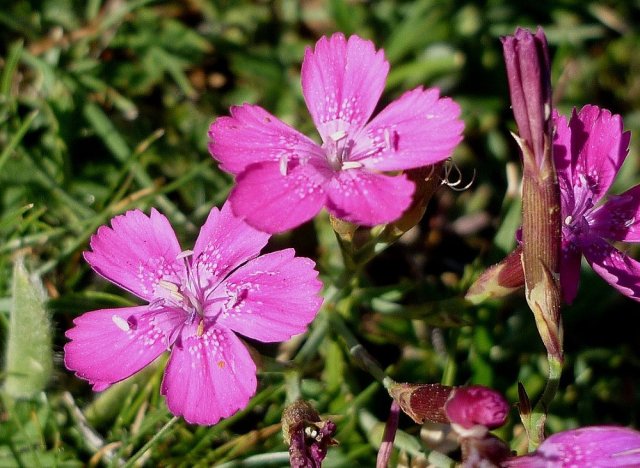
The grass carnation, a perennial herbaceous plant 15-25 cm high, has purple-red, white, or bicolor small flowers.
This unpretentious crop is often used as a ground cover plant: in rock gardens, rockeries, and borders. These small flowers form loose turf, and the sharp-petalled flowers, which last from June to October, reach only 1.5-2 cm in diameter.
The grass prefers calcareous or sandy soils. Choose the most illuminated places on the site for it and do not try to overfeed it with fertilizers.
Zinnia

A variety of zinnias are popular ornamental flowering plants that are favorites of gardeners around the world. These small flowers are loved for their unpretentiousness, fast growth, abundant long-lasting flowering, and variety of colors and shapes.
If you are interested in short plants, you should pay attention to lilliputian zinnias, also known as dwarf zinnias (Lilipu-Zinnien) – dense hemispherical plants 25-30 cm high.
Inflorescences – simple baskets, flat or double, 3-4 cm in diameter, white, yellow, and all shades of red-orange.
Also, in search of miniature brightly flowering plants, you can pay attention to numerous primroses, colored sedums, low types and varieties of bells, lavender, geranium, verbena, sage, daisies, chamomile, Arenaria, fuopsis, Iberia, petunia.
Conclusion
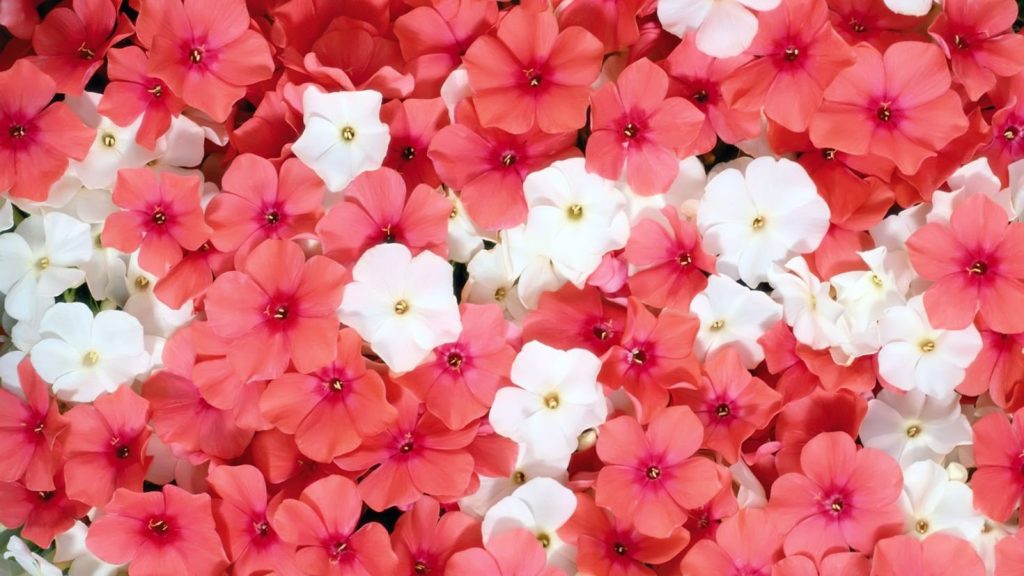
limited space should not discourage gardening enthusiasts from creating vibrant and picturesque flower beds. Embracing small flowers can turn even a tiny patch of land into a colorful oasis.
The top 10 selection, including Phlox, Lobelia, Viola, Pushkinia, Aster, Marigold, Catnip, Alyssum, Dianthus, and Zinnia, offers a diverse range of colors, shapes, and fragrances.
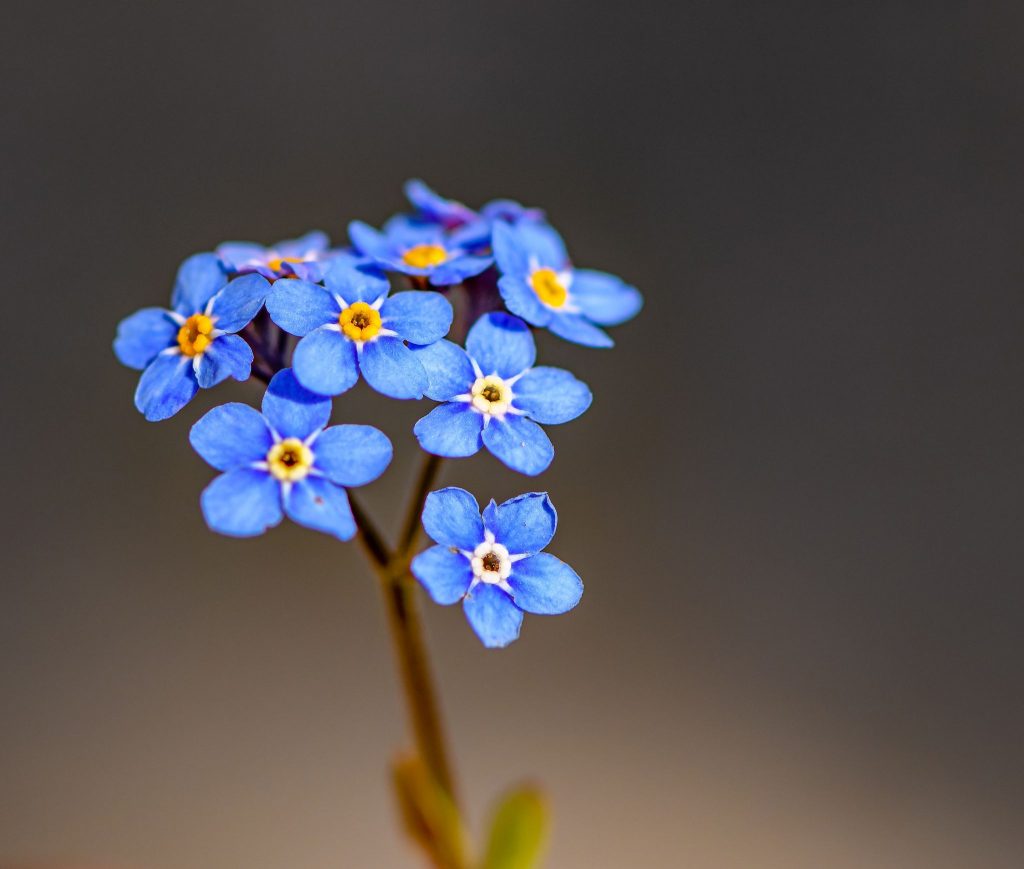
From the enchanting bell-like flowers of Pushkinia to the vibrant yellow and orange marigolds, each small flower brings its unique charm.
These choices not only add aesthetic appeal but also contribute practically, such as marigolds repelling pests. With careful selection and cultivation, a compact flower garden can be as beautiful and rewarding as a larger one. Happy gardening!

